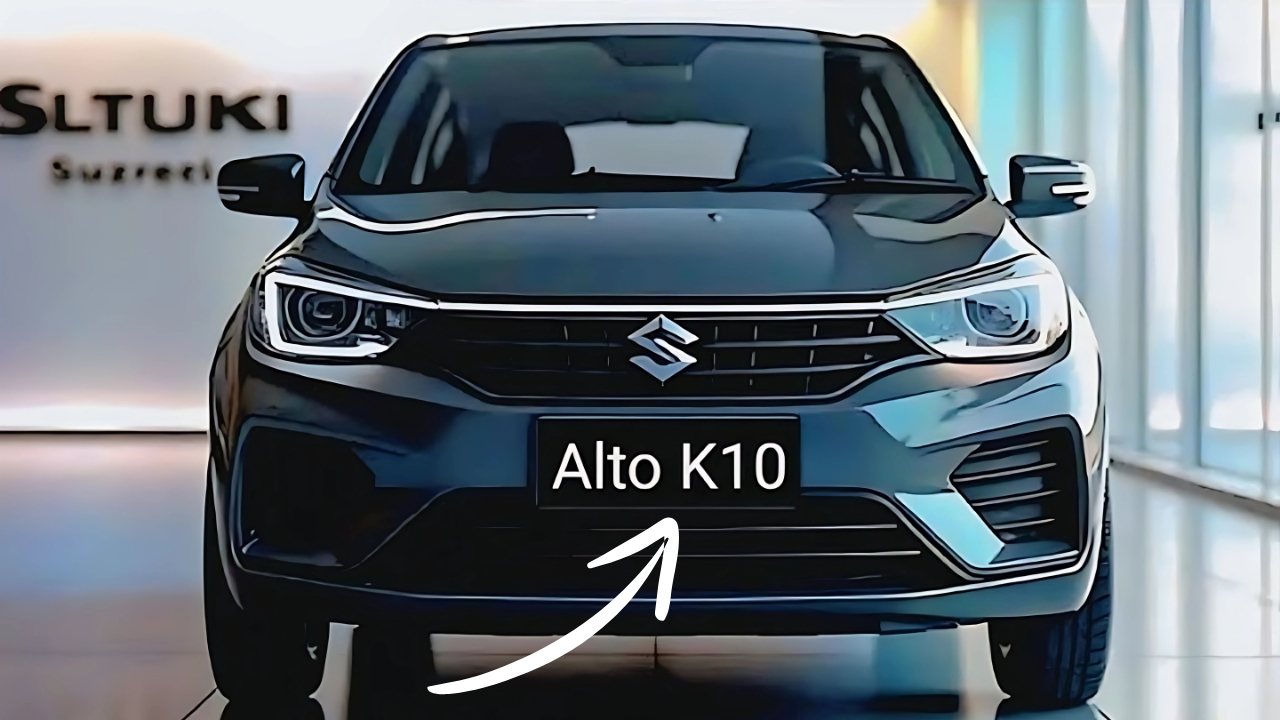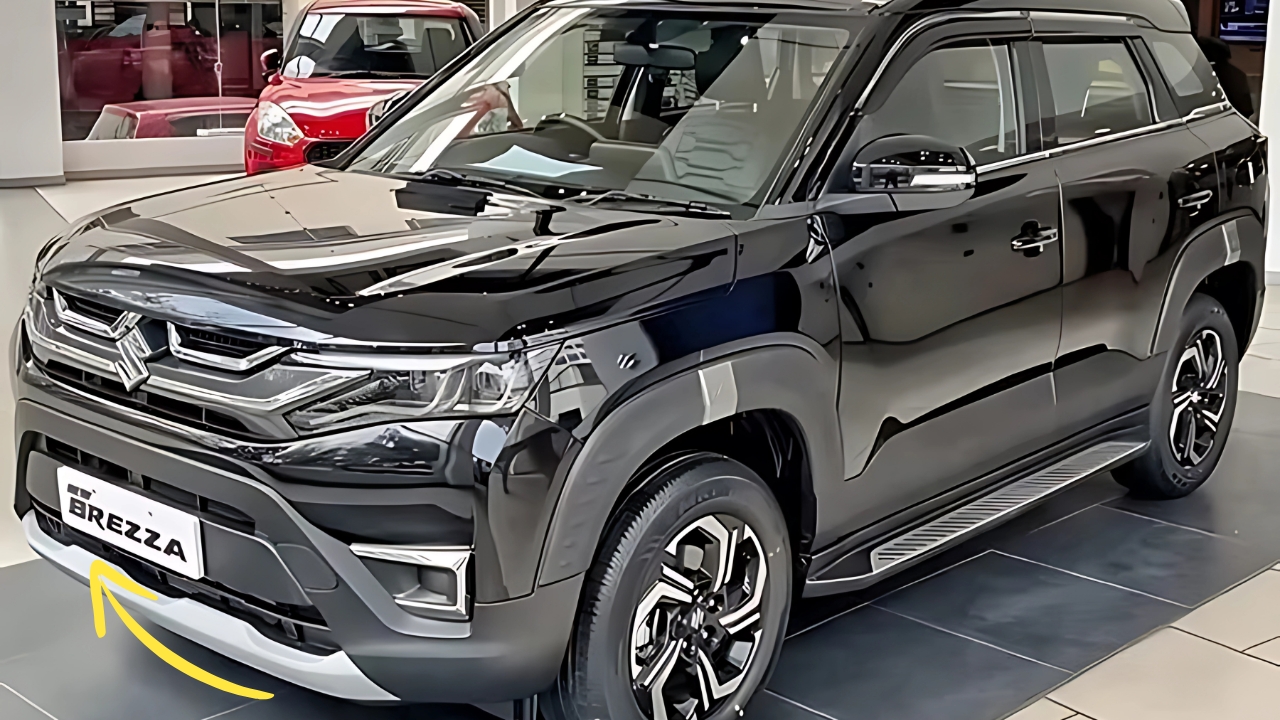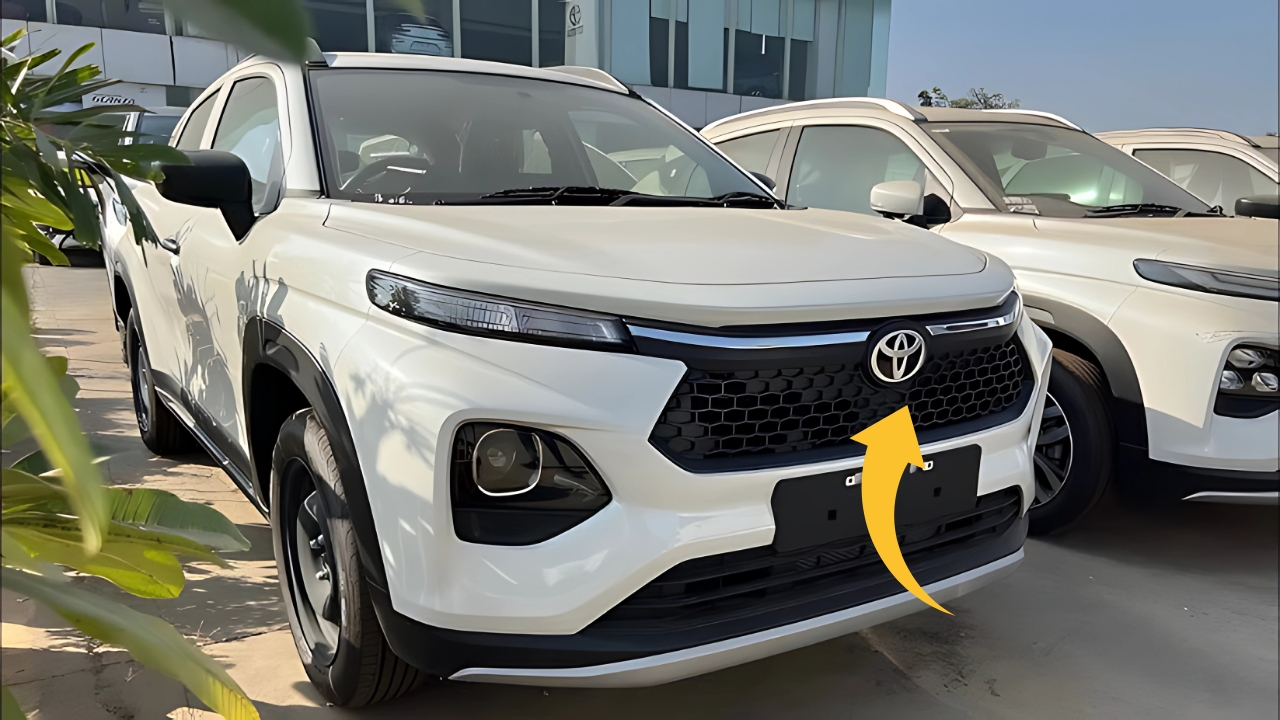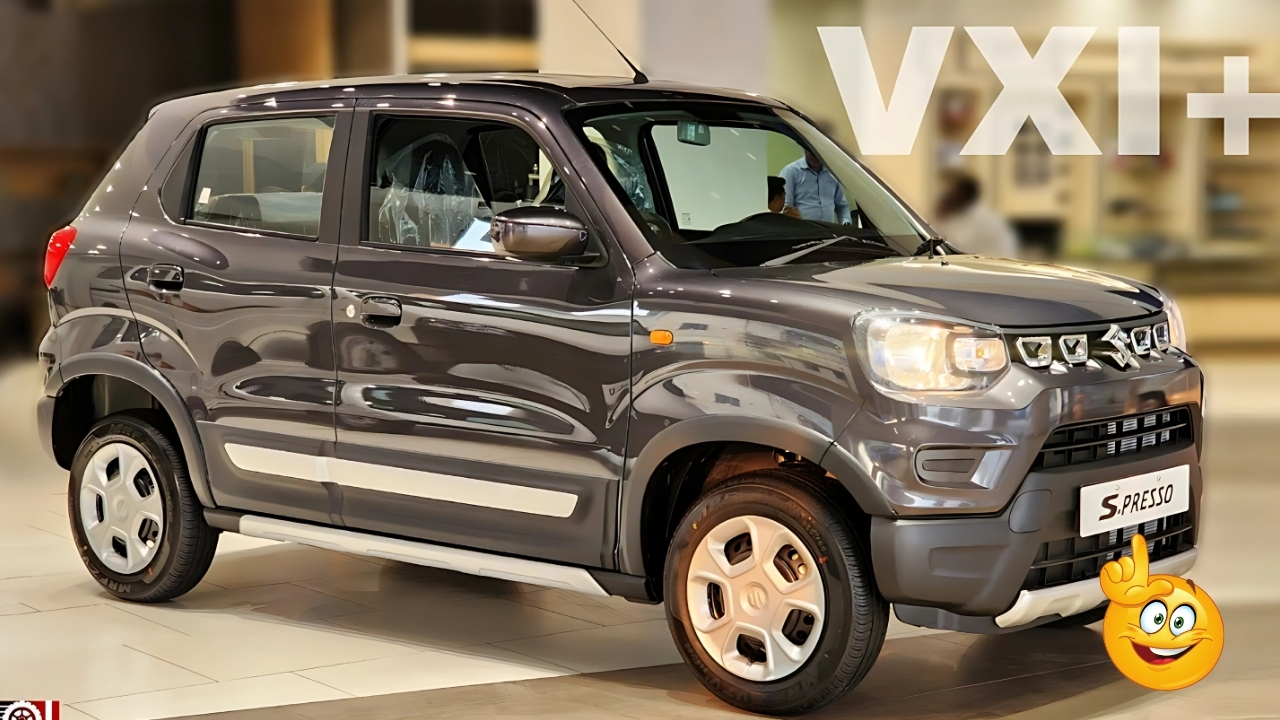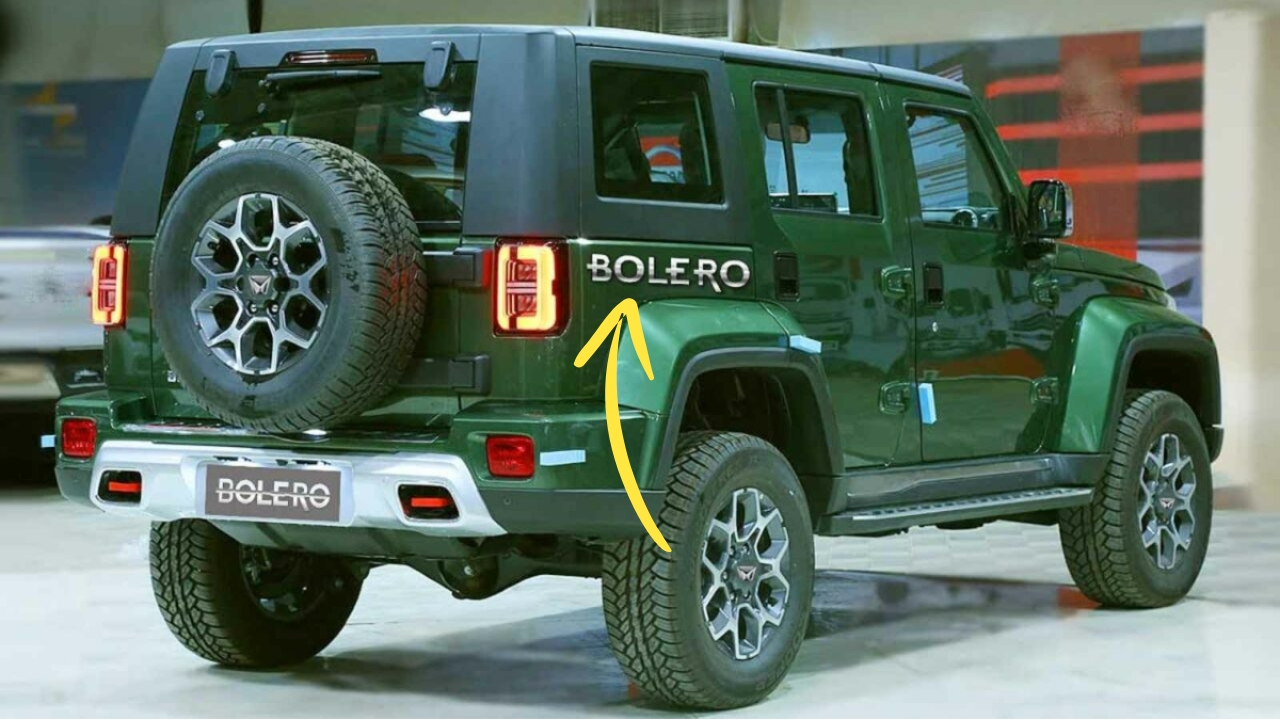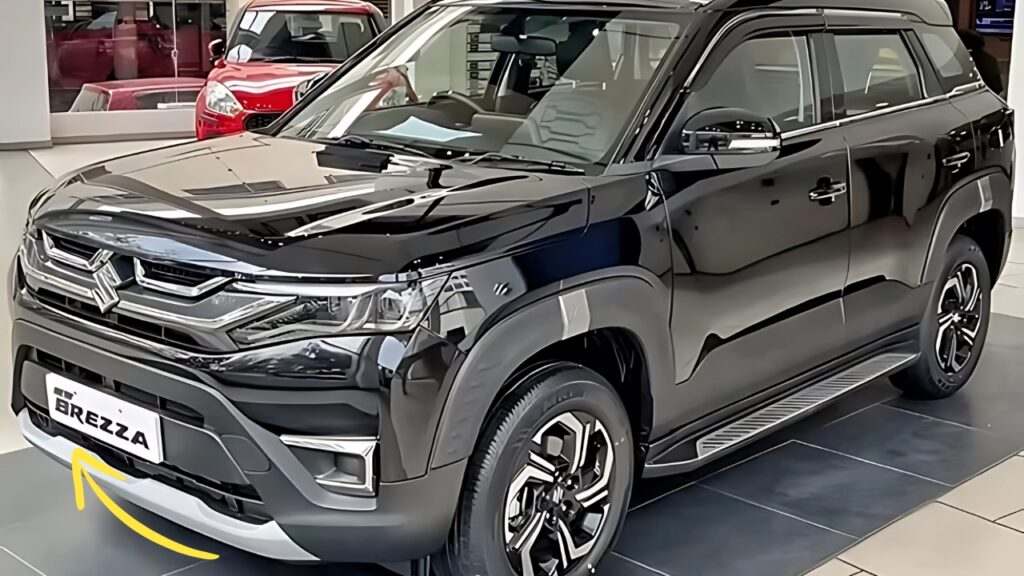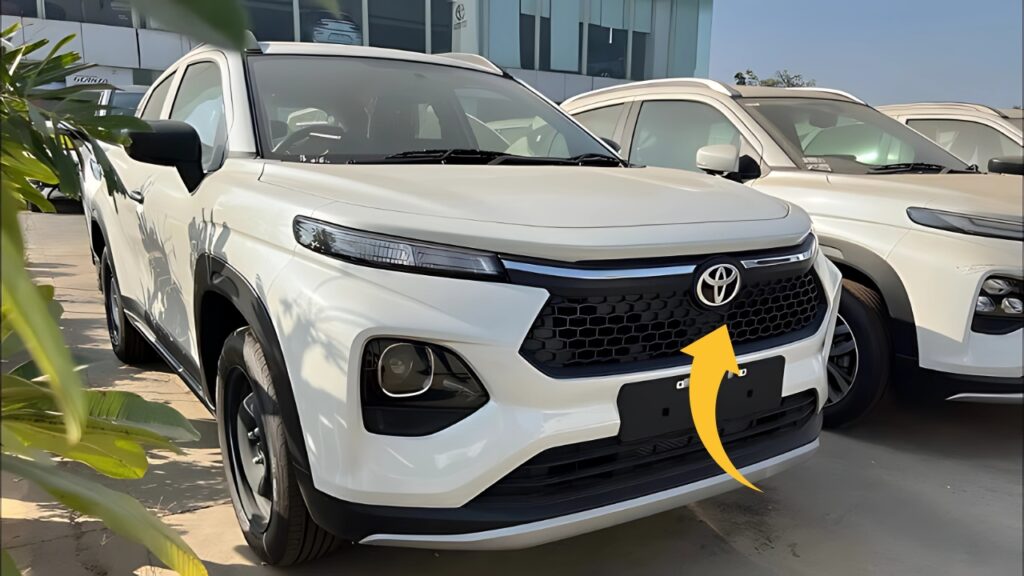Maruti Alto K10: In the bustling streets of Indian cities and the winding roads of rural villages alike, few automotive silhouettes are as instantly recognizable as the humble Maruti Alto.
For over two decades, this compact hatchback has served as the first step into car ownership for countless Indian families, earning itself an iconic status in the country’s automotive landscape.
The Alto K10, with its peppy 1-liter engine, represents the more powerful variant of this beloved nameplate.
Recently updated with modern features and enhanced safety credentials, the Alto K10 continues to balance affordability with practicality in a package that resonates with first-time car buyers across the subcontinent.
Let’s dive deeper into what makes this little warrior tick and why it continues to hold its ground in an increasingly competitive market.
Maruti Alto K10: Design and Exterior: Modest Yet Modern
The Maruti Alto K10’s design philosophy centers around simplicity with a touch of contemporary flair.
Standing at 3,530mm in length, 1,490mm in width, and 1,520mm in height, the Alto K10 maintains compact dimensions that make it ideal for navigating congested urban environments.
The latest iteration sports a more upright stance compared to its predecessor, with a honeycomb front grille flanked by simple halogen headlamps that give the car a cheerful, approachable face.
Moving to the side profile, the Alto K10 features a clean, no-nonsense design with minimal character lines and 13-inch steel wheels with covers on higher variants. The tall boy design maximizes interior space while keeping the overall footprint manageable.
At the rear, straightforward taillights and a practical hatch door complete the unpretentious look.
Available in seven color options – Solid White, Metallic Silky Silver, Metallic Granite Grey, Metallic Sizzling Red, Pearl Metallic Earth Gold, Bluish Black, and Metallic Speedy Blue – the Alto K10 offers enough variety to suit different tastes without going overboard with flashy elements.
The paint quality, while not exceptional, is acceptable for the price point, with metallic options adding a touch of premium feel to this budget offering.
What the Alto K10’s design lacks in excitement or drama, it makes up for in timeless simplicity. This is a car that doesn’t try to be something it’s not – it embraces its role as an affordable, practical city runabout, and its design reflects exactly that.
There’s a certain honesty in this approach that has contributed to the Alto’s enduring appeal across generations of Indian car buyers.
Interior and Comfort: Practical Minimalism
Step inside the Alto K10, and you’re greeted by a cabin that prioritizes function over form. The dashboard layout is straightforward, with a simple instrument cluster featuring a digital speedometer on higher variants.
The center console houses the climate controls and, depending on the variant, either a basic audio system or a 7-inch touchscreen infotainment unit.
Material quality, as expected at this price point, leans toward durability rather than plushness. Hard plastics dominate the cabin, with fabric upholstery for the seats.
The fit and finish, while not luxurious, are adequate for the segment, with panel gaps and overall assembly quality being consistent if not refined.
Space utilization is where the Alto K10 shows its clever engineering. Despite its compact external dimensions, the cabin offers reasonable comfort for four average-sized adults.
The front seats provide adequate support for shorter journeys, though longer drives might prove tiring due to the basic cushioning and limited adjustability.
Rear seat space, while not generous, is acceptable for two adults or three children, with sufficient headroom thanks to the tall roof design.
Storage spaces include a modest glove box, door pockets, and a few cubbies for smaller items. One notable shortcoming is the complete absence of storage options for rear passengers, which can be inconvenient on longer journeys.
The 214-liter boot capacity is sufficient for a couple of small suitcases or grocery bags, though the high loading lip might make accessing heavier items challenging.
For additional cargo space, the rear seat can be folded down, although it doesn’t offer a 60:40 split for more flexible arrangements.
Climate control comes in the form of a manual air conditioning system that performs admirably even in scorching Indian summers.
Higher variants feature power windows for the front, though rear passengers make do with manual winders – a common cost-cutting measure in this segment.
Overall, the Alto K10’s interior represents practical minimalism – it provides the essentials for comfortable daily commuting without unnecessary frills that would drive up the price.
This no-nonsense approach to cabin design aligns perfectly with the expectations of budget-conscious buyers prioritizing functionality over luxury.
Performance and Driving Dynamics: Zippy City Companion
The heart of the Alto K10 is its 1.0-liter, three-cylinder K10C petrol engine, which produces a respectable 66bhp at 5,500rpm and 89Nm of torque at 3,500rpm.
While these figures might seem modest on paper, they translate to sprightly performance in the real world, thanks to the car’s lightweight construction – tipping the scales at just around 790kg.
This favorable power-to-weight ratio makes the Alto K10 feel notably peppy in urban environments. The engine is responsive at low revs, providing good initial acceleration from standstill and making light work of gap-filling maneuvers in city traffic.
Mid-range performance is adequate, though overtaking on highways requires some planning and liberal use of the throttle.
Transmission options include a 5-speed manual and a 5-speed automated manual transmission (AMT), which Maruti brands as “Auto Gear Shift” or AGS.
The manual gearbox offers precise shifts with short throws, making it pleasant to operate in daily driving.
The clutch is light, reducing fatigue in stop-and-go traffic conditions. The AMT, while not as smooth as conventional automatics, provides a convenient two-pedal driving experience at an affordable price point.
Like most AMTs, it exhibits a slight lag during gear changes, but this becomes less noticeable with adapted driving style.
For those seeking maximum efficiency, Maruti also offers a factory-fitted CNG option paired exclusively with the manual transmission.
This variant sacrifices some performance for significantly improved running costs, making it popular among budget-conscious buyers and commercial operators.
The Alto K10’s ride quality is tuned for comfort rather than sportiness, with soft suspension settings that absorb minor road imperfections reasonably well.
Larger potholes and sharp bumps do filter through to the cabin, partly due to the basic suspension architecture and partly due to the short wheelbase.
High-speed stability is acceptable for a car of this size, though crosswinds can affect the lightweight body at highway speeds.
Handling is predictable if not particularly engaging, with light steering that makes city maneuvers effortless.
There’s noticeable body roll during cornering, reminding drivers that this is a practical commuter rather than a hot hatch. Braking performance comes from a front disc and rear drum setup, providing adequate stopping power for everyday scenarios.
NVH (Noise, Vibration, Harshness) control is reasonable at lower speeds, but engine noise becomes more pronounced as revs climb, particularly past the 3,000rpm mark.
Wind and road noise also increase noticeably at highway speeds – a common characteristic in this segment where sound insulation is often minimized to keep costs down.
Fuel efficiency remains one of the Alto K10’s strongest selling points, with the petrol variant delivering an ARAI-certified mileage of 24.39 km/l with the manual transmission and slightly less with the AMT.
The CNG variant pushes this further with a claimed efficiency of 33.85 km/kg, making it one of the most economical cars on Indian roads.
Features and Technology: Essential Rather Than Extravagant
The Alto K10’s feature list varies significantly across its trim levels, with the base variant (STD) offering little more than the bare essentials.
As you move up the range through LXI, VXI, and VXI+, the equipment level improves progressively, though never reaching extravagant heights.
Starting with the base STD variant, you get minimal features – no power steering or air conditioning, making it a challenging proposition for most urban buyers. The LXI adds these essential features, making it the realistic starting point for most customers.
The mid-range VXI brings welcome additions like front power windows, a basic music system with Bluetooth connectivity, and central locking.
The top-spec VXI+ variant offers the most comprehensive feature set, including a 7-inch touchscreen infotainment system with wired Android Auto and Apple CarPlay integration, steering-mounted audio controls, and a four-speaker sound system.
While not cutting-edge, this multimedia setup provides essential connectivity features that modern buyers expect.
Notably absent across all variants are rear power windows, a rear wiper/washer, rear defogger, and automatic climate control – features that some competitors have started offering in this segment.
The absence of a day/night interior rearview mirror and electrically adjustable side mirrors even on top variants highlights the cost-conscious approach to feature selection.
On the technology front, the Alto K10 keeps things simple. There’s no push-button start, automatic headlamps, or rain-sensing wipers.
The instrument cluster, while digital, offers basic information without the graphical flourishes seen in more premium offerings.
This back-to-basics approach aligns with the car’s positioning as an affordable, no-frills urban commuter.
Safety: Basic Protection with Recent Improvements
Safety has historically been a point of contention for entry-level Indian cars, with manufacturers often sacrificing protection features to meet aggressive price targets.
The Alto K10, to its credit, has seen notable improvements in this area with the latest update.
The standard safety package now includes dual front airbags, ABS with Electronic Brakeforce Distribution (EBD), and rear parking sensors across all variants.
Additionally, Electronic Stability Program (ESP) has been added as standard equipment – a welcome addition that enhances vehicle stability during emergency maneuvers.
In a significant recent update, Maruti has introduced six airbags as standard across all variants of the Alto K10, making it the most affordable car in India to offer this level of passive safety.
This move, while partly influenced by upcoming regulatory changes, demonstrates a growing emphasis on occupant protection even in the most budget-oriented segments of the market.
Other safety features include a speed alert system that provides audible warnings when crossing 80 km/h and 120 km/h thresholds, front seatbelt reminders, and an impact-sensing auto door unlock function.
Child safety is addressed with ISOFIX child seat anchorages on higher variants.
In terms of crash performance, the Alto K10 received a modest 2-star safety rating in Global NCAP crash tests – not impressive by global standards but in line with many competitors in this price segment.
The car’s lightweight construction, while beneficial for performance and efficiency, presents inherent challenges for structural rigidity in crash scenarios.
Variants and Pricing: Value Proposition
The Maruti Alto K10 is available in multiple variants, catering to different budget constraints and feature preferences.
The lineup starts with the bare-bones STD variant, priced at approximately ₹4.23 lakh (ex-showroom), and extends to the top-spec VXI S-CNG at around ₹6.21 lakh (ex-showroom).
Here’s a breakdown of the key variants and their approximate pricing:
STD (O) – ₹4.23 lakh
LXI – ₹4.83 lakh
VXI – ₹5.30 lakh
VXI+ – ₹5.80 lakh
VXI AMT – ₹5.80 lakh
VXI+ AMT – ₹6.30 lakh
LXI S-CNG – ₹5.95 lakh
VXI S-CNG – ₹6.21 lakh
(Note: Prices are approximate ex-showroom figures and may vary by location)
In terms of value proposition, the VXI variant emerges as the sweet spot in the lineup, offering a good balance of essential features without the premium commanded by the top variants.
For those prioritizing convenience in city driving, the VXI AMT presents a compelling case with its two-pedal operation at a reasonable premium over the manual.
The CNG variants, despite their higher initial cost, offer exceptional long-term value through significantly reduced running costs, particularly appealing to high-mileage users like daily commuters and commercial operators.
Ownership Experience: The Maruti Advantage
One of the Alto K10’s strongest selling points lies not in the car itself but in the ownership experience facilitated by Maruti Suzuki’s extensive sales and service network.
With over 3,000 sales outlets and 3,800+ service centers across India, Maruti offers unparalleled accessibility for maintenance and repairs – a crucial consideration for first-time car buyers, particularly those in smaller towns and rural areas.
Maintenance costs remain impressively low, with service intervals set at every 10,000 kilometers or one year, whichever comes first.
Routine service costs typically range between ₹1,500 and ₹3,000, depending on the service schedule, making the Alto K10 one of the most economical cars to maintain in the Indian market.
Spare parts availability is excellent, with genuine components readily available across the country at reasonable prices.
The simple mechanical construction also means that even smaller workshops can handle most repairs effectively, further reducing ownership hassles.
Resale value is another area where the Alto K10 excels, benefiting from Maruti’s strong brand reputation and the car’s proven reliability record.
Even after several years of ownership, Alto models typically retain a higher percentage of their value compared to many competitors, reducing the effective cost of ownership over the vehicle’s lifecycle.
The standard warranty package covers 2 years/40,000 kilometers, which can be extended up to 5 years/100,000 kilometers at additional cost.
While the base warranty period is somewhat shorter than some competitors, the reliability record of the Alto reduces concerns about out-of-warranty repairs.
Comparative Analysis: Market Position
To better understand the Alto K10’s market positioning, let’s compare it with its key competitors in the entry-level hatchback segment:
| Feature | Maruti Alto K10 | Renault Kwid | Maruti S-Presso | Tata Tiago | Hyundai Grand i10 Nios |
|---|---|---|---|---|---|
| Price Range (Ex-showroom) | ₹4.23-6.21 lakh | ₹4.70-6.40 lakh | ₹4.26-6.10 lakh | ₹5.60-8.00 lakh | ₹5.80-8.50 lakh |
| Engine Capacity | 1.0L (66bhp/89Nm) | 0.8L (54bhp/72Nm) / 1.0L (67bhp/91Nm) | 1.0L (66bhp/89Nm) | 1.2L (86bhp/113Nm) | 1.2L (83bhp/114Nm) |
| Transmission Options | 5MT, 5AMT | 5MT, 5AMT | 5MT, 5AMT | 5MT, 5AMT | 5MT, 5AMT |
| Fuel Options | Petrol, CNG | Petrol | Petrol, CNG | Petrol, CNG | Petrol, CNG |
| Claimed Mileage | 24.39km/l (Petrol), 33.85km/kg (CNG) | 22km/l (0.8L), 20km/l (1.0L) | 24.76km/l (Petrol), 32.73km/kg (CNG) | 19.8km/l (Petrol), 26.49km/kg (CNG) | 21km/l (Petrol), 27.3km/kg (CNG) |
| Boot Space | 214 liters | 279 liters | 270 liters | 242 liters | 260 liters |
| Touchscreen Size | 7-inch (top variant) | 8-inch (top variant) | 7-inch (top variant) | 7-inch (top variant) | 8-inch (top variant) |
| Safety Rating | 2-star Global NCAP | 1-star Global NCAP | 2-star Global NCAP | 4-star Global NCAP | 2-star Global NCAP |
| Standard Airbags | 6 | 2 | 2 | 2 | 2 |
This comparison reveals the Alto K10’s positioning as the most affordable entry point in the segment, with pricing that undercuts even close competitors like the Renault Kwid and Maruti’s own S-Presso.
While it sacrifices some features and space compared to higher-priced alternatives like the Tata Tiago and Hyundai Grand i10 Nios, it delivers on the core promise of accessible, efficient, and low-maintenance personal mobility.
The recent addition of six standard airbags gives the Alto K10 a unique selling proposition in terms of passive safety features, though its underlying structure (as reflected in the 2-star Global NCAP rating) doesn’t match the robustness of the more expensive Tata Tiago with its 4-star rating.
Key Strengths: Why It Continues to Sell
The Alto K10’s enduring popularity in the Indian market can be attributed to several key strengths:
Affordability: As the most accessible non-quadricycle four-wheeler from a mainstream manufacturer, the Alto K10 represents the first step into car ownership for many Indian families.
Fuel Efficiency: Exceptional mileage figures, particularly in the CNG variant, translate to significant savings in running costs – a crucial consideration in a price-sensitive market.
Low Maintenance: Simple mechanicals, affordable spare parts, and Maruti’s extensive service network ensure hassle-free ownership even for first-time car buyers.
City-Friendly Dimensions: Compact footprint and light controls make it ideally suited for navigating congested urban environments and tight parking spaces.
Peppy Performance: The 1.0-liter engine delivers sprightly performance for city use, with good low-end torque making daily driving stress-free.
Strong Resale Value: Excellent retention of value reduces the effective cost of ownership and provides reassurance to budget-conscious buyers.
Brand Trust: Maruti Suzuki’s long-standing reputation for reliability and after-sales support instills confidence, particularly important for first-time car buyers.
Limitations: Room for Improvement
Despite its strengths, the Alto K10 has several limitations that potential buyers should consider:
Basic Ride Quality: The simple suspension setup struggles with larger road imperfections, resulting in a ride that can be jarring on poorly maintained roads.
Limited Highway Stability: The lightweight construction and basic aerodynamics make highway cruising less composed than in larger, heavier vehicles.
Sparse Feature List: Even in top variants, the Alto K10 lacks some features that have become increasingly common in the segment, such as rear power windows and automatic climate control.
Modest Space: While adequate for four adults on shorter journeys, the cabin feels cramped during longer trips, particularly for rear passengers.
Basic NVH Control: Engine, road, and wind noise become pronounced at higher speeds, detracting from comfort during extended drives.
Structural Limitations: The 2-star Global NCAP rating reflects fundamental compromises in structural rigidity, despite the addition of six airbags.
Utilitarian Interior: The cabin design and material quality prioritize function over form, lacking the visual appeal of some competitors.
Ideal Buyer Profile: Who Should Consider the Alto K10?
The Alto K10’s specific combination of strengths and limitations makes it particularly suited to certain types of buyers:
First-Time Car Owners: Those transitioning from two-wheelers to four-wheelers will appreciate the Alto K10’s affordable purchase price, low running costs, and easy drivability.
Urban Commuters: City dwellers seeking an efficient, easy-to-park personal mobility solution for daily commutes will find the Alto K10 well-suited to their needs.
Budget-Conscious Families: Small families operating on tight budgets who need occasional four-passenger capability will find the Alto K10 offers adequate space at a compelling price point.
Senior Citizens: Older drivers looking for a simple, easy-to-operate vehicle for occasional use will appreciate the Alto K10’s light controls and straightforward operation.
Secondary Car Buyers: Households looking for an additional vehicle for short errands and city runs can benefit from the Alto K10’s efficiency and low maintenance costs.
Maruti Alto K10: Conclusion: The Enduring Appeal of Simplicity
In an automotive landscape increasingly dominated by feature-laden, technologically complex vehicles, the Maruti Alto K10 stands as a testament to the enduring appeal of simplicity.
It doesn’t try to be all things to all people – instead, it focuses on delivering the essential functions of personal mobility at the most accessible price point possible.
This laser focus on the fundamentals – affordable purchase price, low running costs, easy maintenance, and hassle-free ownership – has kept the Alto nameplate relevant for over two decades in the Indian market.
While it may lack the flash and features of more expensive alternatives, it delivers on its core promise with remarkable consistency.
The recent addition of six standard airbags represents an important step forward in democratizing safety features, demonstrating that even the most budget-oriented vehicles need not compromise on basic protection.
This move, along with the continued refinement of the package over successive generations, shows Maruti’s commitment to evolving the Alto in meaningful ways while maintaining its core appeal.
For many Indian families, the Alto K10 isn’t just a car – it’s a milestone, representing the first step into the world of car ownership.
This emotional connection, combined with the rational benefits of its value proposition, ensures that despite newer, flashier competitors entering the market, the humble Alto continues to find homes across the length and breadth of India.
In essence, the Maruti Alto K10 embodies the principle that sometimes, less truly is more. By focusing on getting the basics right rather than chasing features or fashionable design trends, it has carved out a unique and enduring position in India’s automotive landscape – one that seems likely to persist for years to come.
Also read this:
